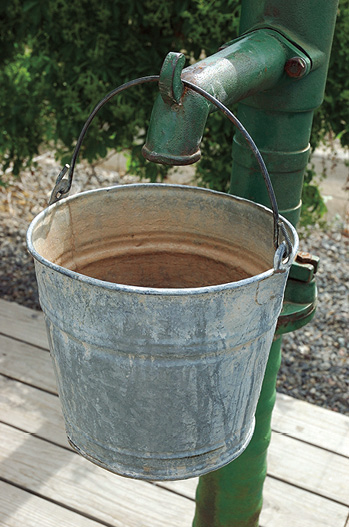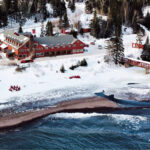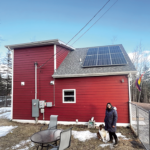Even in a place as water-plentiful as the North Shore, most residents rely on groundwater to supply their homes with water. Drilling a well and having a septic system installed, neither of which are cheap, are two of the first steps for anyone looking to build a new home in the boreal forests of northeastern Minnesota and northwestern Ontario.
According to the U.S. Geological Survey (USGS), about 30 percent of the world’s freshwater is underground, compared to the 1.2 percent that is accessible on the surface. The rest of the Earth’s freshwater is frozen in glaciers and ice caps.
So, it makes sense that despite the thousands of lakes in our collective backyard—including the world’s largest by surface area in Lake Superior—most homes along the shore would get their water from the ground. Unless the home is directly on a lake, the nearest source of water is likely beneath its foundation.
Ironically, accessing groundwater on the North Shore can be a real challenge given the unpredictable “fractured rock formations” that define the local geology, according to the Minnesota Department of Health’s Well Owner’s Handbook: A Consumer’s Guide to Well Water in Minnesota.
To access the vast stores of ground water on the North Shore, companies like Rasmussen Well Drilling in Two Harbors, McKeever Well Drilling in Schroeder, and NWO Well Services in Thunder Bay utilize modern drill rigs, equipment, and techniques to cut through the soil and bedrock.
Equally important to knowing how to drill, however, is knowing where to drill.
Anticipating a project’s needs and challenges before drilling is an important service that well drilling companies provide. While it is impossible to know with 100 percent certainty what to expect before installing a well, familiarity with local geology and access to modern data sets allow these companies to make good, educated decisions and give customers an idea of what to expect, should they decide to have a well put in on their property.
Before well companies were able to tap into modern data sets and the wealth of knowledge on local geology that exists today, however, water dowsing was a common technique used in deciding where to find water.
Water dowsing—also known as water witching or divining—is a practice that has been used for centuries to locate underground sources of water. Practitioners of water dowsing usually use a Y-shaped stick or rod to guide them, though pendulums and other similar items are at times used depending on the dowser’s beliefs.
According to the USGS’ webpage on water dowsing, most “dowsers”—also referred to as diviners or “water witches”—hold one prong of the forked stick in each hand with the “palms facing upward” and the long end of the “Y” sticking up in the air. The dowser then walks back and forth across the area that they are searching for water, and, allegedly, as they pass over a hidden source of water, the stick is said to be drawn down to the source of the water.
Dowsing is still practiced today, and, according to the American Society of Dowser’s, it is used to search for more than just water. Diviner’s utilize their “senses” to find hidden minerals, ores, gemstones, oil, and spiritually significant sites within the earth.
Intuition, it might be said, is at the heart of water dowsing. And, though you are unlikely to find a modern well drilling outfit relying on a possibly thousand-year-old practice according to some sources, to decide where to start drilling, most well-drilling today still starts with an educated guess. They just rely on data sets, geology, and experience, rather than water dowsing to decide where to look for water.
For further reading on the practice of dowsing provided by those who believe in its effectiveness, the American Society of Dowser’s provides several resources and historical references on their website: dowsers.org. Keep in mind, however, that there has yet to be any scientific evidence, in the conventional sense, that water dowsing is an effective method of finding groundwater.
At the end of the day, even in places where it’s challenging to predict the accessibility of groundwater, most wells will eventually find water. A dowser would have to be incredibly unlucky to “drill dry,” especially on the North Shore.
If you are trying to decide where to drill a well on the North Shore, the best thing to do is to call the local experts. Rasmussen, McKeever, and NWO have decades of experience drilling for water in our fractured rock formations, and will give the best approximation of where the water is and how best to access it.




